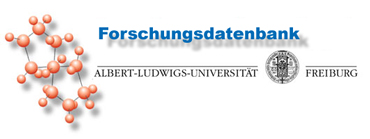| [Zurück zum Forschungsbericht] |
 |

Function of the TCR
Projektbeschreibung:At the "heart" of the immune system are the antigen receptors, which specifically recognize antigen and after triggering initiate an immune response. The T cell antigen receptor (TCR) recognizes foreign peptides presented by MHC molecules and subsequently initiates signal transduction cascades that lead to the activation of a T cell. Our central aim in this project is to decipher the molecular mechanisms with which the TCR transmits information across the membrane. The CD3 conformational change (CD3 CC) In cooperation with the lab of Balbino Alarcon in Madrid we have discovered that the TCR undergoes a conformational change at the CD3 subunits upon peptide-MHC binding (Cell 2002). This CD3 conformational change (CD3 CC) exposes the proline-rich region in CD3epsilon, so that it is able to bind to the adapter protein Nck. We could further show that the CD3 CC is necessary for T cell activation and that only dimeric antigens can induce this change (Immunity 2007). Currently, we follow two main questions: (i) which mechanism keeps the TCR in the closed, ionactive state before antigen binding? and (ii) how does exposure of the proline-rich region (or of the cytoplasmic CD3 tyrosines) promote TCR phosphorylation? The abTCR needs the CD3 CC to get activated, i.e. to become phosphorylated (Immunity 2007, J Immunol 2014). Recently, we could show that the small brother, the gdTCR, does not need this structural change (Cell Reports 2014). However, if the CD3 CC was artificially induced, the tumor killing activity of the gd T cells was enhanced. TCR nanoclustering Using Blue Native Gelelectrophoresis (BN-PAGE) and immuno-gold electron microscopy, we could show that TCRs form nanoclusters before peptide-MHC binding (J Exp Med 2005) and that this nanoclustering is regulated by cholesterol (J Biol Chem 2013). Further, TCR nanoclustering determines the sensitivity of a T cell response (Immunity 2011). For the first time this work shows that direct lipid-binding to a transmembrane protein determines the distribution of the protein on the cell surface and that this can regulate the responsiveness of a cell. Currently, we want to analyse the state of TCR nanoclustering and thus of T cell responsiveness in different T cell populations in the healthy and the diseased state.Projektlaufzeit:
Projektbeginn: 2002Projektleitung:
Projektende: (unbegrenzt)
Prof. Wolfgang SchamelAktueller Forschungsbericht
Albert-Ludwigs-Universität Freiburg
Institut für Biologie III, BIOSS Centre for Biological Signaling Studies, Centre for Chronic Immunodeficiency CCI
Molekulare Immunologie
Schänzlestraße 18
79104 Freiburg
Telefon: 0761 - 203-67511
Fax: 0761-203-97660
Email: wolfgang.schamel@biologie.uni-freiburg.de
http://www.bioss.uni-freiburg.de/cms/3623.html